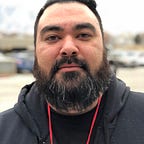Kuali Ready - A Business continuity planning tool
What would you do if disaster struck? Or if you had a leak in one of your buildings and had to relocate hundreds of faculty, staff, and students? Would a university know what to do? How would they get back to business as usual?
A team of three set out to improve the experience of business continuity planning and take it to a whole new level.
How might we?
How might we help universities create and complete actionable BCP’s (Business Continuity Plans)?
Introduction
Kuali had an existing product called Ready. It helps universities create plans that help universities get back to business as usual.
Creating the software was not just enough. For the past 2 years, Ready was experiencing a lot of churn from clients saying that Ready was not ready, no pun intended and it didn’t help them do the job that they needed it to do.
I was asked by the Director of UX to jump over and work part-time on figuring out this problem. The hypothesis was if we could design something that could solve people’s needs then we would keep Ready and the company would invest more resources in ready. If not then we would scrap it and allocate the sole developer and product manager elsewhere.
I was currently working on the CORE team which handled internal tools that all Kuali software used. Kuali Identity included login, users and group creation and, A workflow creation tool, and a form building tool which we called formbot. Yes, I was doing a lot.
So why not throw more on my plate? Because this is what I do, I tend to solve problems at a high level while creating better user experiences and I love it!
The team
George South — Senior Software Developer
Terri Eikenbary — Subject Matter Expert/Product Manager
Aaron Uyehara — Senior Product Designer
I was fortunate enough to jump on a really great team that was able to collaborate and work well together.
The existing product
The existing software was a very long form that people would fill out.
Discovery Phase
We started meeting with existing and previous customers through zoom. We conducted interviews for the first 2–3 weeks. Really digging into the current lay of the land and what was going on with the tool and why it didn’t seem to have a lot of adoption and a lot of churn.
What we found out
We discovered that there were problems with university faculty and admin getting people to complete plans. Often University BCP admin would have training on how to fill out a plan what information faculty members needed in order to complete a plan.
Then the faculty members would go their separate ways and still have a hard time filling out the plan and plans would not get filled out.
University BCP admin would then have to handhold faculty and staff while the plan was filled out.
What was the real problem?
The real problem stems from university culture and practice. We can’t solve that but perhaps we could make a tool that would make it easier?
Types of universities and personas
Universities regardless of size who care about business continuity planning. Usually but not always have a full-time emergency planning committee and resources dedicated to planning and make it a priority.
This community usually has a dedicated emergency planning or admin to lead efforts.
Universities regardless of size who want to create a plan but don’t dedicate resources or efforts?
Part-time emergency planning admin with no support.
lay BCP leaders — faculty or staff that on top of their job have to fill out the plan and be an emergency preparedness leader in case something happens.
Our hypotheses
If we could make the tool easier for preparers to fill out that more plans will get filled out.
If we could validate a new design that would help BCP admin and perparers complete more plans then Kuali would invest in Ready and build it.
Inspiration struck
as I was just finished filling out my taxes on Turbotax by Intuit. I loved the ease of use and the ability to get the help and clarification I need.
Design Phase
I set off to come up with different examples around thoughts I was having, Often sending messages to George and Terri.
Sketches
I usually start my design process on a piece of paper, white board or iPad. Since we all were remote, being able to capture these quickly and get feedback was very important for me.
Wireframing
I initially used Sketch and Invision to design and prototype out wireframes. I later moved to Figma because of our rapid prototyping and validation tours we were conducting.
High Fidelity Mockups + Prototyping & Testing
Prototyping was very important for us. We were able to make quick changes due to user feedback on the fly with programs like Figma.
I switched to Figma because our design had rapidly changed. While using Invision and sketch Layout would change so quickly that I would have to go into Invision and move hot spots. This was very tedious.
While I was in Figma and user testing I made changes while I was with a customer. Figma allowed me to make changes with automatic updates.
Here’s a link to the prototype that we used to validate the latest changes.
Validation
Outcome
We proved that through more guidance and help the plan seemed easier and less daunting.
More transparency and setting expectations really seemed to get people excited.
Buy in from Kuali
Thanks to the hard work that we performed. We were able to validate our hypotheses. Kuali has hired a full-time designer who is also working as a product manager and two full-time developers to build out ready. They have been able to get more universities to sign up and pay for Ready.
